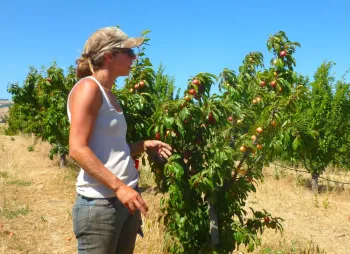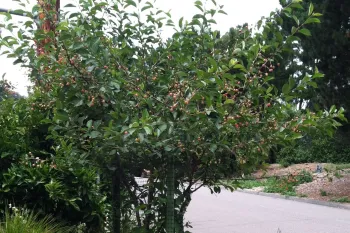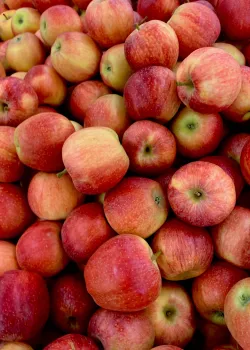Summer pruning for fruit trees

If you’ve ever wrestled with an overgrown fruit tree, you know the struggle—branches reaching for the sky, fruit hiding in a tangled mess, and those pesky suckers popping up everywhere. But don’t worry, summer is the perfect time to get out there with your pruners and give your trees a little mid-season TLC. Done right, summer pruning keeps your trees manageable, encourages better fruit, and makes harvesting a whole lot easier.
Years ago, I used to do all my pruning in winter, figuring that’s when the books said to do it. But then I learned that summer pruning has its own set of benefits. Unlike winter pruning, which encourages a burst of new growth, summer pruning helps slow things down. This means less wild, vertical growth and more energy directed into fruit production.

When it comes to summer pruning, I like to keep it simple. Here’s what I focus on:
- Water Sprouts and Suckers – You know those tall, skinny shoots shooting straight up from a branch? Those are water sprouts, and they don’t do anything for your fruit. Same goes for the suckers coming up from the base of the tree. I cut them off to keep my tree’s energy focused where it matters.
- Thinning Dense Branches – If I can’t see a bit of sky through the branches, it’s time to thin things out. Removing a few branches here and there improves airflow, reduces disease, and lets sunlight reach the fruit for better ripening.
- Shortening Long Branches – If I have a branch stretching too far out, making it tough to reach fruit, I trim it back by about a third. I’m careful not to remove too much at once—keeping at least 80% of the foliage helps prevent sunburn and stress.
Late June through August is prime time for summer pruning here in Marin. By then, the trees have put most of their energy into growing, and fruit has already started to form. I’ve also found that pruning in late summer helps reduce the risk of sunburn since the strongest summer heat has passed.
- Sharp, Clean Tools Are a Must – A good pair of bypass pruners and a sharp pruning saw make all the difference. Dull or dirty tools can tear bark and spread disease.
- Cut at the Right Angle – I always prune just above a bud or lateral branch, angling the cut slightly outward. This encourages healthy regrowth and keeps the tree in good shape.
- Less is More – It’s tempting to go wild with the pruners, but removing too much can stress the tree. I keep my cuts conservative.
- Watch the Weather – I try to prune on dry days to minimize the risk of fungal infections.
Every time we prune, we’re influencing the tree’s hormone balance. The tips of branches hold growth hormones (auxins), so when we remove those, the tree redirects its energy elsewhere. Summer pruning helps keep trees compact and productive, while winter pruning encourages new shoots to take off in spring. Knowing when and how to prune makes all the difference.

From my own experience and what the experts say, these are the best fruit trees to prune in summer:
- Apples & Pears – Keeps them a manageable size and improves fruit quality.
- Peaches & Nectarines – Thinning out excess growth helps with air circulation and prevents fungal diseases like peach leaf curl.
- Plums & Apricots – Good airflow helps prevent brown rot, which can be a real problem in our coastal climate.
- Cherries – Summer pruning helps prevent bacterial canker, which thrives in damp conditions.
Summer pruning may seem like an extra chore, but trust me, it pays off. A little effort now means healthier trees, tastier fruit, and an easier time harvesting later. So grab your pruners, step outside, and give your trees some love. Your future self (and your fruit bowl) will thank you!
By James Campbell, August 9, 2025
